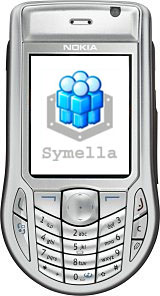I’ve been playing a bit of Urban Dead recently. Urban Dead is a very low-key, web-based MMORPG — you play a 3-minute turn once every 24 hours. It needs some rebalancing and some new features, especially given the organised nature of some of the bigger marauding zombie hordes, but I’m still finding it fun.
To scratch a couple of itches, I’ve written a Greasemonkey user script for UD called the Urban Dead HUD. It adds several nifty features to the user interface:
- keyboard accelerator access keys for the action buttons, and your inventory — very handy when you’re attacking an enemy repeatedly;
- an on-page long-distance map of the surrounding squares;
- a distance tracker, which tracks the distances to “important” locations for you
There’s screenshots on the download page, so you can see what I’m talking about.
Greasemonkey is a fantastic tool, as is Mark Pilgrim’s Dive Into Greasemonkey, which has repeatedly turned out to be an excellent, well-written reference while hacking this. Thanks guys!
 Via
Cory at Boing Boing, here’s
Via
Cory at Boing Boing, here’s 




